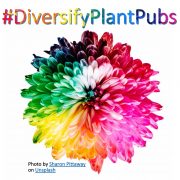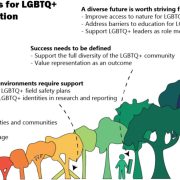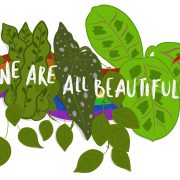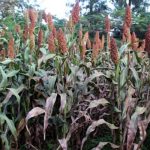Plants and Queerness
Plant life is queer life. Plant life resists classification, redefines sex and reimagines ways of being. Plant life takes root underground, in the darkness, and spreads its limbs towards the light. Plant life is unshakable resilience. Plant life is perpetual growth. Plant life is a gift.
Not too long ago, when I was taking my first steps in science as an undergraduate, I wiped my nail polish off before stepping into the lab. My queerness and my research lived in separate parts of my brain, and only one could animate me at any given moment. It’s not that my environment made me feel unsafe. I was fortunate that way. But still, Queerness and Science just seemed so diametrically opposed, it never occured to me that the two could coexist. And nobody was there to show me, either.
Things changed when I met plants. And I mean, really met plants. I think I’ll remember forever when standing in Central Park on a sweltering summer day, I was first confronted with the full power of a giant American elm grown from thin air and 200 years of sunlight. I read the elm’s name from the sign on its trunk. Ulmus americana. The titan echoed my greeting with a rustle. Later in life, I would learn from someone wise that when you give a being its name, you receive something in return. What I received that day was kinship.
I’ve been a plant scientist ever since. I study plant metabolic networks: the quiet, invisible molecular dance that underpins the forms and behaviors of all green life. I feel at home in this little corner of science. People tend to be gentle here. To love plants, after all, is to love the overlooked, to slow down, to embrace stillness. Under my nitrile gloves, my fingernails are painted turquoise.
Plants, like queerness, suggest new ways of being, living and loving. They are bisexual, they are trans, asexual, polyamorous, hermaphrodite and gender fluid. They are other; they are in between, alive like animals but seemingly still as minerals. Plants are everywhere, proud and strong and often hidden in plain sight. Like us, they make their presence known by their gifts to the world: shelter, nourishment, a breath of fresh air. Queerness can be all of those things, too: a home, a family, a source of sustenance. What I once thought of as a burden has, for me, become as essential as oxygen.
Plants grow until they die. From the instant of germination and for as long as a leaf remains to catch the sun’s photons, a plant adds mass to its being, stretching its limbs further into the ground and towards the sky. They have no other choice: their breath depends on it. Life and growth; each side sustaining the other in a pact so intimate the two become impossible to untangle. Of all the things that make plants special, this one is undoubtedly my favorite.
Often I’ve found stories of queerness abound with a similar need for growth. Many of us are forced to grow in order to escape the spaces – mental and physical – where we are not welcome. Without role models, cast aside by history, we grow to become our own teachers and make our presence known. Like plants that grow in order to breathe, we grow in order to exist. Maybe this means we, too, get to grow forever.
By Will Dwyer (@phytowill)
Hey! My name is Will Dwyer, I’m a research assistant in Sue Rhee’s lab, where I study plant metabolism and its relationship with environmental stress. I’ve loved my time in plant biology so much I will be continuing my work with a PhD next fall. When i’m not in the lab, you can usually find me under some redwoods or at the top of a Big Sur mountain. Happy pride month everyone!








Leave a Reply
Want to join the discussion?Feel free to contribute!